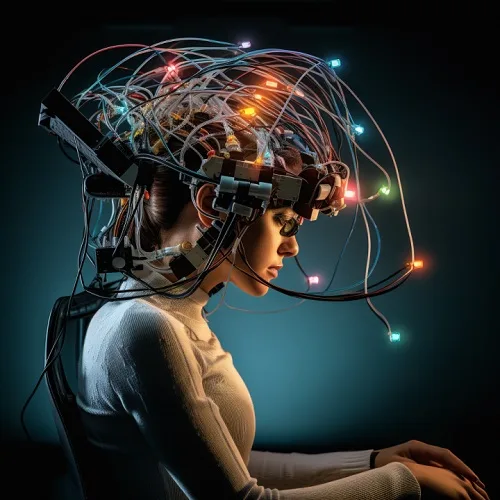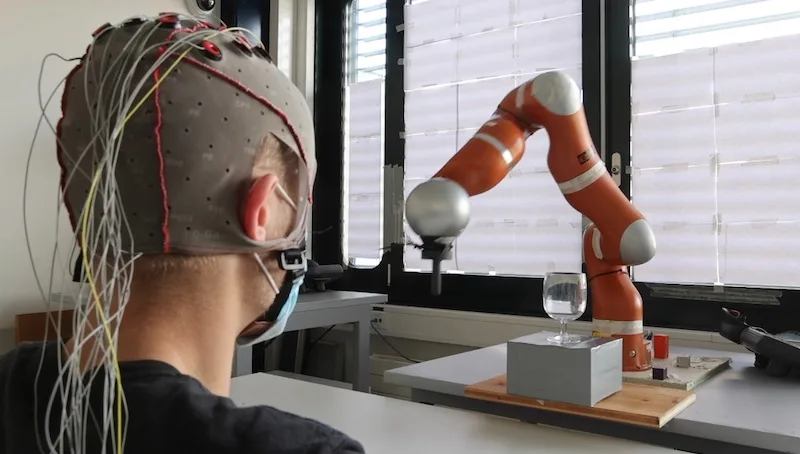Neural Interfaces Tech Review: Merging Humans and Machines

Neural interfaces, often referred to as brain-computer interfaces (BCIs), represent a revolutionary technology that bridges the gap between the human brain and external devices. The concept dates back to the 1970s when initial experiments focused on understanding the brain’s electrical activity. However, it wasn’t until the 1990s that significant advancements were made, largely due to the progress in neuroscience and computer technology. The turning point came in the early 2000s when the first successful human trials demonstrated the potential of BCIs in restoring motor functions in individuals with paralysis. Today, neural interfaces are at the forefront of cutting-edge research, with applications spanning from medical rehabilitation to enhancing human cognition.
The development of neural interfaces has been accelerated by the integration of artificial intelligence, machine learning, and advanced signal processing. These technologies have enabled the interpretation of complex neural signals with unprecedented accuracy, paving the way for real-time interaction between the brain and machines. As we look forward, the ongoing research promises even more sophisticated interfaces that could revolutionize the way humans interact with technology, fundamentally altering our approach to communication, mobility, and even thought processes.
Understanding Neural Interfaces: Purpose and Potential Impact
At its core, a neural interface is a communication pathway that facilitates direct interaction between the human brain and external devices. This technology is designed to interpret brain signals, allowing individuals to control machines using their thoughts. The primary purpose of neural interfaces is to address critical challenges in healthcare, particularly for individuals with disabilities. For example, BCIs can restore lost sensory and motor functions in patients with severe spinal cord injuries or neurodegenerative diseases. This ability to bypass damaged neural pathways offers a new lease on life for many, enabling them to regain independence and improve their quality of life.
Beyond medical applications, neural interfaces hold the promise of enhancing human capabilities. By seamlessly merging human cognition with machine intelligence, BCIs could expand the limits of human performance. This technology could lead to the development of augmented reality systems that are controlled by thought alone, or even memory enhancement devices that boost cognitive function. However, these advancements also raise ethical questions about the extent to which we should integrate machines into our bodies and minds. As the technology progresses, it will be crucial to balance innovation with ethical considerations to ensure that neural interfaces are developed in a way that benefits humanity as a whole.
Current Applications of Neural Interfaces
Neural interfaces are already being used in several groundbreaking applications, particularly in the field of healthcare. One of the most notable uses is in neuroprosthetics, where BCIs help amputees control prosthetic limbs using their thoughts. These devices provide a level of dexterity and control that was previously unattainable with traditional prosthetics. Additionally, neural interfaces are employed in the development of cochlear implants, which restore hearing in individuals with profound hearing loss by directly stimulating the auditory nerve.
Another significant application of neural interfaces is in the treatment of neurological disorders. For instance, deep brain stimulation (DBS) uses implanted electrodes to deliver electrical impulses to specific brain regions, effectively managing symptoms of conditions such as Parkinson’s disease and epilepsy. This technology has transformed the lives of many patients, offering relief where medication alone has failed. Furthermore, BCIs are being explored as a tool for communication for individuals with locked-in syndrome, allowing them to interact with the outside world through thought-controlled typing systems.
Future Prospects for Neural Interfaces
The potential applications of neural interfaces extend far beyond the current medical uses. In the future, BCIs could play a critical role in enhancing human cognition and performance. For example, researchers are investigating the possibility of using neural interfaces to create direct brain-to-brain communication systems, which could revolutionize the way we share information. This technology could enable instant transmission of thoughts and ideas between individuals, fundamentally changing the nature of human communication.
Another promising avenue is the use of neural interfaces in immersive virtual reality (VR) experiences. By directly interfacing with the brain, BCIs could create fully immersive environments that respond to the user’s thoughts and emotions in real-time. This could lead to more intuitive and engaging VR experiences, with applications ranging from entertainment to education and therapy. Additionally, neural interfaces could be used to develop advanced cognitive enhancement tools, potentially allowing individuals to learn new skills or languages at an accelerated pace.
However, the widespread adoption of these technologies will require overcoming significant technical and ethical challenges. Issues such as data privacy, the potential for misuse, and the long-term effects of neural interface use must be carefully considered. As the technology continues to evolve, it will be essential to establish robust regulatory frameworks to ensure that neural interfaces are developed and used responsibly.

The Future of Neural Interfaces: Promises and Challenges
The future of neural interfaces is incredibly promising, with the potential to transform multiple aspects of human life. As research continues to advance, we can expect to see more sophisticated BCIs that offer greater precision, reliability, and ease of use. These improvements could lead to a new era of human-machine symbiosis, where the boundaries between biological and artificial systems become increasingly blurred.
However, the path forward is not without challenges. One of the key hurdles is ensuring the safety and biocompatibility of neural interfaces, particularly for long-term use. The potential risks associated with implanting devices in the brain, such as infection or tissue damage, must be thoroughly addressed. Additionally, there is a need for greater understanding of the ethical implications of neural interfaces, particularly concerning issues of autonomy, identity, and consent.
Despite these challenges, the potential benefits of neural interfaces are too significant to ignore. With careful consideration of the ethical and technical issues, this technology could lead to profound advancements in healthcare, communication, and human enhancement. As we move closer to realizing the full potential of neural interfaces, it will be crucial to engage in open and informed discussions about the future of this transformative technology.
